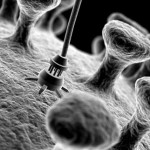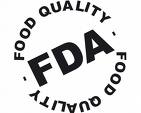
www.h20technologies.com
I previously commented on the House bill that would amend the Toxic Substances Control Act (TSCA) by updating it to include more substances, more disclosure, and expedited review by EPA. On July 29, 2010, the House Energy and Commerce Committee’s Subcommittee on Commerce, Trade, and Consumer Protection held a hearing on the bill (H.R. 5820). Certain themes emerged from this hearing.
Theme 1: The Economy.
● Jobs. All agreed that a major goal should be to avoid the loss of more jobs. This may mean that legislation updating TSCA may proceed more slowly than the current bill would require. This, in turn, would stall regulation of nanotechnology through TSCA.
● Expense and difficulty of compliance. Cal Dooley, President and CEO for the American Chemistry Council, representing the large chemical manufacturers in the industry, expressed concern that the increased burden and costs on manufacturers, and the longer time frame for EPA to review submissions, would result in a delay in bringing new chemicals to market and would force manufacturers to other countries. He stated: “We would export innovation and jobs instead of products.”
● Foreign competition. This theme was especially emphasized by Beth D. Bosley on behalf of the Society of Chemical Manufacturers and Affiliates (SOCMA), representing small chemical manufacturers. She argued that H.R. 5820 “poses overwhelming challenges for the industry,” including the loss of innovation and chemical manufacturing to foreign markets. She feared that the “substantive loss of high-paying manufacturing jobs will result.”
Theme Two: Defining a Scientific Standard
● The Hearing indicated that this is certain to be a sticking point in the debate to come over H.R. 5820.
● Cal Dooley of the American Chemistry Council stated: “[T]he safety standard as established in this bill sets such an impossibly high hurdle for all chemicals in commerce that it would produce technical, bureaucratic, and commercial barriers so significant they would be the law’s undoing.”
● In contrast, Richard Denison, a Senior Scientist of the Environmental Defense Fund, praised H.R. 5820 for assuring that “the best and latest science” be used for risk-based safety determinations.
Theme Three: Impact on Industry Innovation
● Some witnesses presented testimony that H.R. 5820 would spur industry innovation by raising U.S. chemical standards to a level that would allow American companies to compete in a global economy where disclosure of information has become important.
● In contrast, as the representatives of the chemical industry argued, concerns exist that innovation in the chemical industry will be exported abroad and that proprietary information will be compromised.
What about nanotechnology?
Though not a pervasive theme, the Hearing had some mention of nanotechnology. Richard Denison, a Senior Scientist with the Environmental Defense Fund, said the following about the current state of nanotechnology regulation:
“EPA has had little choice but to resort to pleading with the emerging nanotechnology industry to provide, through a voluntary program, the most basic information EPA feels it needs to decide how best to regulate these materials – only to see a level of participation best described as paltry. Such materials can by no means be assumed to be benign; for example, one class of nanomaterials – multi-walled carbon nanotubes – behaves in a manner that is ominously similar to asbestos.”
http://energycommerce.house.gov/documents/20100729/Denison.Testimony.07.29.2010.pdf
Regulation of nanotechnology is coming, one way or another. It is time to have a full discussion and debate on how best to achieve that, for the interests of the public, workers, and industry. Currently, it appears that debate on the bill will resume in earnest when the next Congress convenes. Let’s hope that the debate addresses these critical questions.
Transcripts and video from the hearing may be accessed at
 It’s fair to say that the United States has not yet tiptoed into the waters of regulating nanotechnology directly. Rather, new efforts at regulation of chemicals and consumer products tend toward indirect regulation. That is, these efforts would strengthen and expand existing federal regulation. Two examples are recent bills introduced in the House of Representatives that would amend the Toxic Substances Control Act (TSCA) and the Food Drug and Cosmetic Act (FDCA) for substances and products that may or may not contain nanomaterials. As discussed in
It’s fair to say that the United States has not yet tiptoed into the waters of regulating nanotechnology directly. Rather, new efforts at regulation of chemicals and consumer products tend toward indirect regulation. That is, these efforts would strengthen and expand existing federal regulation. Two examples are recent bills introduced in the House of Representatives that would amend the Toxic Substances Control Act (TSCA) and the Food Drug and Cosmetic Act (FDCA) for substances and products that may or may not contain nanomaterials. As discussed in  The University of Buffalo recently unveiled a dramatic development in the nanotech realm. Through the use of magnetic nanoparticles it is possible for scientists to “remotely control ion channels, neurons and even animal behavior.” There are many possible real-world applications of this technology including targeted cancer, diabetes, and neurological disorder treatments.
The University of Buffalo recently unveiled a dramatic development in the nanotech realm. Through the use of magnetic nanoparticles it is possible for scientists to “remotely control ion channels, neurons and even animal behavior.” There are many possible real-world applications of this technology including targeted cancer, diabetes, and neurological disorder treatments.

